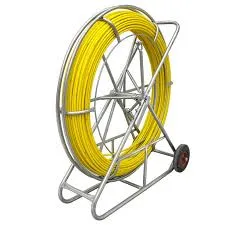
-
 Afrikaans
Afrikaans -
 Albanian
Albanian -
 Amharic
Amharic -
 Arabic
Arabic -
 Armenian
Armenian -
 Azerbaijani
Azerbaijani -
 Basque
Basque -
 Belarusian
Belarusian -
 Bengali
Bengali -
 Bosnian
Bosnian -
 Bulgarian
Bulgarian -
 Catalan
Catalan -
 Cebuano
Cebuano -
 Corsican
Corsican -
 Croatian
Croatian -
 Czech
Czech -
 Danish
Danish -
 Dutch
Dutch -
 English
English -
 Esperanto
Esperanto -
 Estonian
Estonian -
 Finnish
Finnish -
 French
French -
 Frisian
Frisian -
 Galician
Galician -
 Georgian
Georgian -
 German
German -
 Greek
Greek -
 Gujarati
Gujarati -
 Haitian Creole
Haitian Creole -
 hausa
hausa -
 hawaiian
hawaiian -
 Hebrew
Hebrew -
 Hindi
Hindi -
 Miao
Miao -
 Hungarian
Hungarian -
 Icelandic
Icelandic -
 igbo
igbo -
 Indonesian
Indonesian -
 irish
irish -
 Italian
Italian -
 Japanese
Japanese -
 Javanese
Javanese -
 Kannada
Kannada -
 kazakh
kazakh -
 Khmer
Khmer -
 Rwandese
Rwandese -
 Korean
Korean -
 Kurdish
Kurdish -
 Kyrgyz
Kyrgyz -
 Lao
Lao -
 Latin
Latin -
 Latvian
Latvian -
 Lithuanian
Lithuanian -
 Luxembourgish
Luxembourgish -
 Macedonian
Macedonian -
 Malgashi
Malgashi -
 Malay
Malay -
 Malayalam
Malayalam -
 Maltese
Maltese -
 Maori
Maori -
 Marathi
Marathi -
 Mongolian
Mongolian -
 Myanmar
Myanmar -
 Nepali
Nepali -
 Norwegian
Norwegian -
 Norwegian
Norwegian -
 Occitan
Occitan -
 Pashto
Pashto -
 Persian
Persian -
 Polish
Polish -
 Portuguese
Portuguese -
 Punjabi
Punjabi -
 Romanian
Romanian -
 Russian
Russian -
 Samoan
Samoan -
 Scottish Gaelic
Scottish Gaelic -
 Serbian
Serbian -
 Sesotho
Sesotho -
 Shona
Shona -
 Sindhi
Sindhi -
 Sinhala
Sinhala -
 Slovak
Slovak -
 Slovenian
Slovenian -
 Somali
Somali -
 Spanish
Spanish -
 Sundanese
Sundanese -
 Swahili
Swahili -
 Swedish
Swedish -
 Tagalog
Tagalog -
 Tajik
Tajik -
 Tamil
Tamil -
 Tatar
Tatar -
 Telugu
Telugu -
 Thai
Thai -
 Turkish
Turkish -
 Turkmen
Turkmen -
 Ukrainian
Ukrainian -
 Urdu
Urdu -
 Uighur
Uighur -
 Uzbek
Uzbek -
 Vietnamese
Vietnamese -
 Welsh
Welsh -
 Bantu
Bantu -
 Yiddish
Yiddish -
 Yoruba
Yoruba -
 Zulu
Zulu


Dec . 05, 2024 15:36 Back to list
heavy duty stainless steel cable ties
Heavy Duty Stainless Steel Cable Ties A Durable Solution for Secure Connections
In today's rapidly evolving industrial landscape, efficient and reliable fastening solutions are paramount. Among the myriad of options available, heavy-duty stainless steel cable ties have emerged as a preferred choice for both commercial and residential applications. Known for their strength, corrosion resistance, and versatility, these cable ties are essential tools that can meet various needs across different sectors.
What are Heavy Duty Stainless Steel Cable Ties?
Heavy-duty stainless steel cable ties are fastening devices made from high-quality stainless steel, designed to hold and organize cables, wires, and other materials securely. Unlike their plastic counterparts, which may degrade over time or under extreme conditions, stainless steel cable ties provide unparalleled durability and longevity. They are engineered to withstand harsh environmental conditions, making them excellent for outdoor use or in areas where exposure to moisture or chemicals is common.
Features and Benefits
1. Corrosion Resistance One of the standout features of stainless steel cable ties is their excellent corrosion resistance. They are impervious to rust and can endure exposure to saline environments, which makes them ideal for maritime applications. Whether it’s for marine equipment, outdoor installations, or chemical processing, these ties won't let you down.
2. High Load Capacity Heavy-duty stainless steel cable ties are constructed to handle significant loads. They can support the weight of multiple cables or heavy-duty equipment without risk of failure. This makes them suitable for industrial settings, such as manufacturing plants or construction sites, where heavy cables and machinery are commonplace.
heavy duty stainless steel cable ties

3. Versatility These cable ties can be used for a wide variety of applications. In addition to securing cables, they are also used in securing pipes, holding equipment in place, or even bundling items for transportation. Their adaptability makes them a valuable tool in various industries, from telecommunications to automotive manufacturing.
4. Temperature Resistance Stainless steel cable ties have high-temperature resistance, allowing them to function effectively in extreme temperatures. Whether it’s in freezing conditions or high-heat environments, these ties maintain their integrity, ensuring that your connections remain secure.
5. Ease of Use Despite their robust nature, heavy-duty stainless steel cable ties are remarkably easy to use. They come with a simple locking mechanism that ensures a tight grip, and installation can be completed quickly without the need for specialized tools. This efficiency saves time and labor costs, making them a favorite among professionals.
Applications
Heavy-duty stainless steel cable ties find applications in a plethora of industries. In the electrical sector, they are used to organize wiring and secure electrical installations in commercial buildings. In the construction industry, they are employed to hold together scaffolding and other structures. Additionally, they are vital in the automotive and aerospace industries for securing various components in vehicles and aircraft. Even homeowners can benefit from these cable ties for gardening, organizing tools, or securing outdoor equipment.
Conclusion
Heavy-duty stainless steel cable ties are a testament to the power of simplicity and strength combined. Their ability to perform well under extreme conditions makes them an invaluable asset in numerous applications. Investing in these durable fastening solutions ensures that you maintain organization and safety, whether in an industrial setting or your own backyard. With their multitude of benefits, it's clear why heavy-duty stainless steel cable ties have become a go-to choice for those seeking effective and reliable fastening solutions. As industries continue to evolve and demand more robust products, the prominence of stainless steel cable ties is set to rise, solidifying their status as essential tools for connection and organization.
Latest news
Upgrade Your Cable Installation with the Right Rodder Tools
NewsMay.28,2025
Maximize Efficiency with the Right Cable Laying Tools
NewsMay.28,2025
Mastering Cable Installation: Tools That Make the Difference
NewsMay.28,2025
Solutions for Heavy-Duty Cable Handling: Choosing the Right Cable Roller
NewsMay.28,2025
Efficient Cable Installation Starts with the Right Rodder Tools
NewsMay.28,2025
Choosing the Right Cable Pulling Tools for Your Project
NewsMay.28,2025











